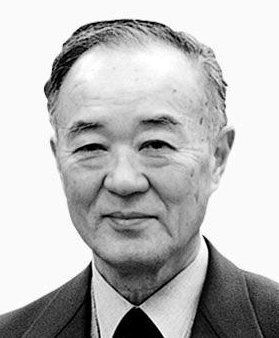Nationality Japanese Name Kazuhiko Nishijima | Books Fields and particles | |
 | ||
Institutions Osaka City UniversityMax Planck Institute for PhysicsInstitute for Advanced StudyUniversity of Illinois at Urbana-ChampaignUniversity of TokyoKyoto UniversityChuo University Alma mater University of TokyoOsaka University Known for StrangenessGell-Mann–Nishijima formula Died February 15, 2009, Tokyo, Japan Fields Theoretical physics, Particle physics | ||
Kazuhiko Nishijima
Kazuhiko Nishijima (西島 和彦, Nishijima Kazuhiko) (4 October 1926 – 15 February 2009) was a Japanese physicist who made significant contributions to particle physics. He was professor emeritus at the University of Tokyo and Kyoto University until his death in 2009.
Contents

He was born in Tsuchiura, Japan. He is most well known for his work on the Gell-Mann–Nishijima formula, and the concept of strangeness, which he called the "eta-charge" or "η-charge", after the eta meson (
η
).
He was nominated for the Nobel Prize in Physics in 1960 and 1961.
Life
Nishijima was born in Tsuchiura, Japan on 4 October 1926. He obtained his diploma in physics at the University of Tokyo in 1948, and his PhD from Osaka University in 1955 for his thesis on the nuclear potential.
In 1950, while at Osaka University, Nishijima was hired by Yoichiro Nambu to work on the theory of strong interactions and of strange particles (then called V particles). While studying the decay of these particles, Nishijima developed, with Tadao Nakano, and independently of Murray Gell-Mann, a formula that would relate the quantum numbers of these particles, the Gell-Mann–Nishijima formula (or sometimes the NNG formula, for Nishijima, Nakano, and Gell-Mann).
where Q is the electric charge, I3 is the isospin projection, B is the baryon number, and S is the strangeness quantum number of the particle. This formula was pivotal for the later development of the quark model by Gell-Mann and George Zweig in 1964 (independently of each other).
From 1956 to 1958, Nishijima worked in Göttingen, Germany, upon the invitation of Werner Heisenberg. In 1958, he moved to the United States and joined the Institute for Advanced Study in Princeton, New Jersey. A year and a half later, he became a professor at the University of Illinois at Urbana–Champaign. In 1966, he returned to the University of Tokyo, where he founded a theoretical physics research group and served in some administrative positions. From 1986 until 1989, he served as the director of the Research Institute for Fundamental Physics at Kyoto University, and from 1995 until 2005, he was the president of the Nishina Memorial Foundation, a foundation that promotes physics in Japan.
Nishijima kept active in research until near the end of his life. His last subjects of research were color confinement and noncommutative quantum field theory. He died of leukemia on 15 February 2009 at the age of 82.
